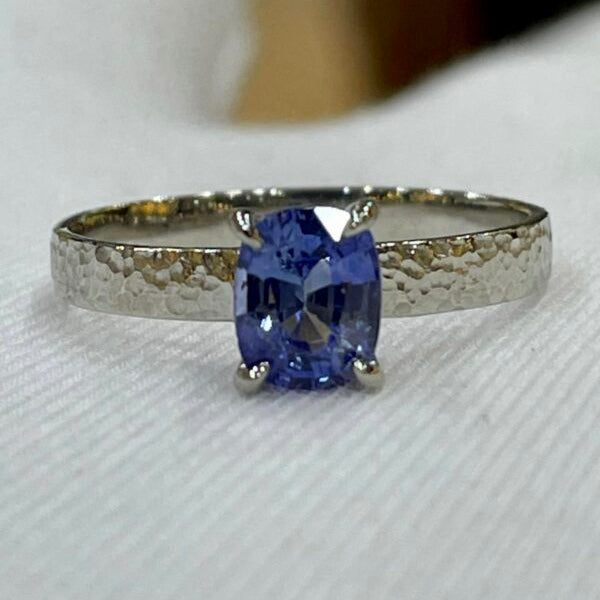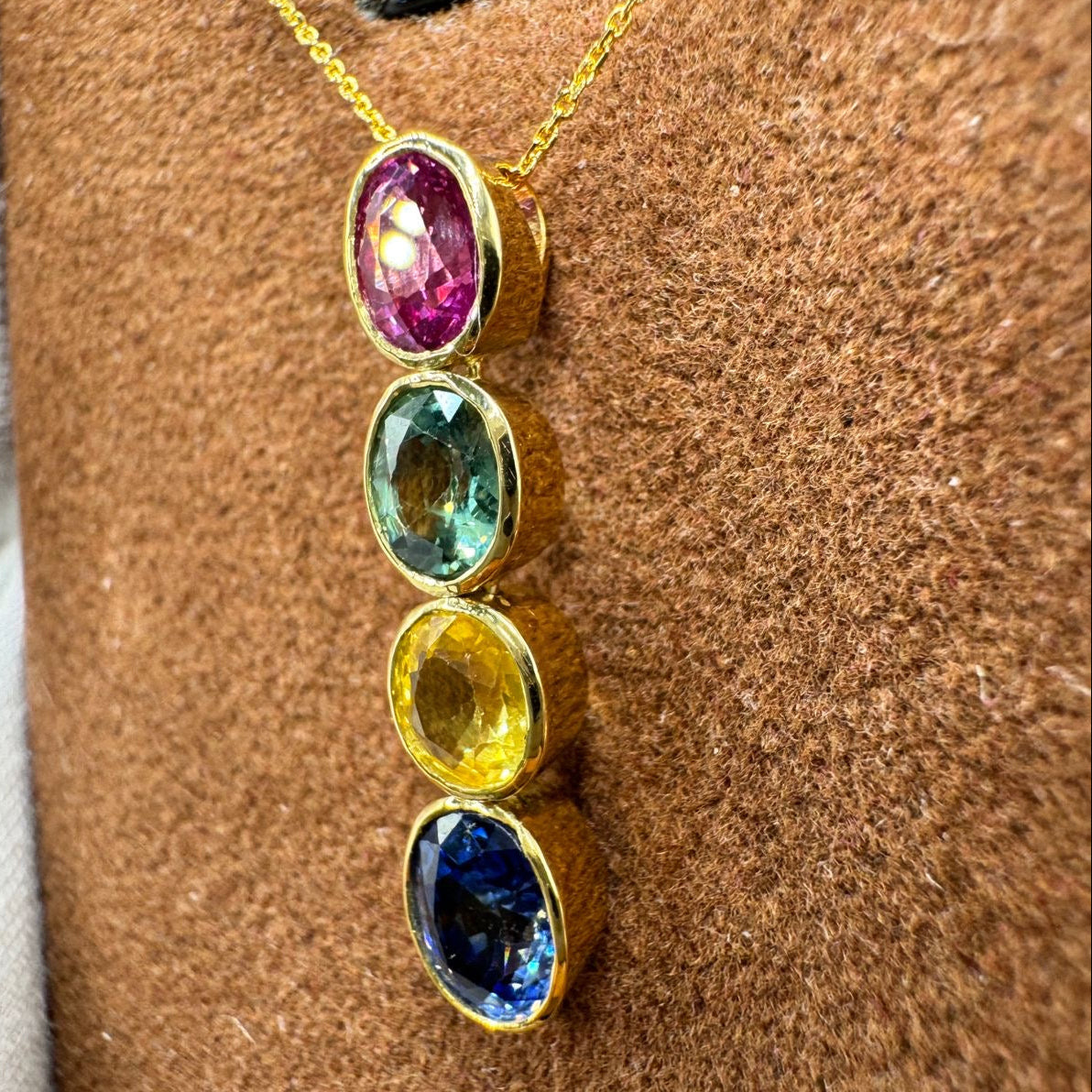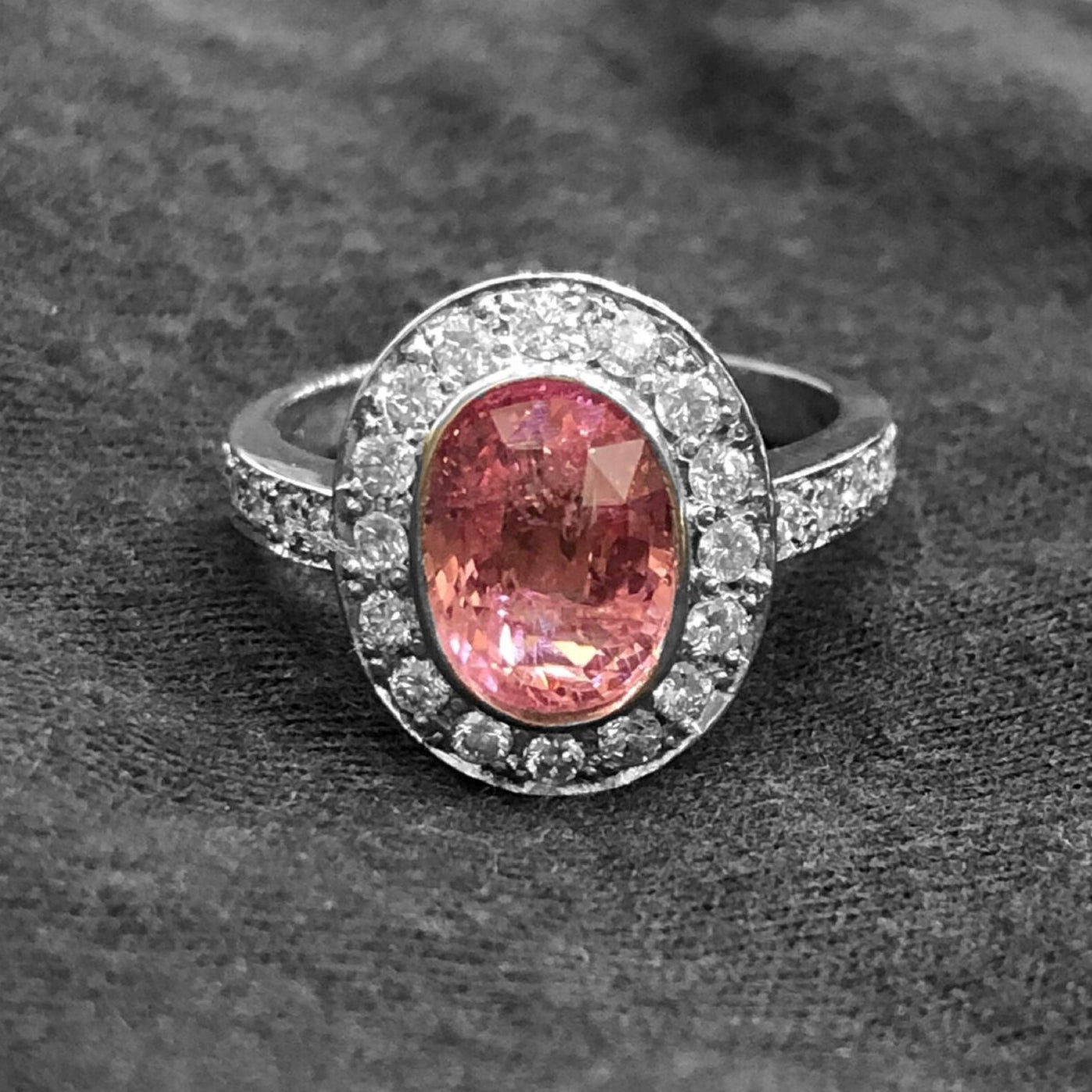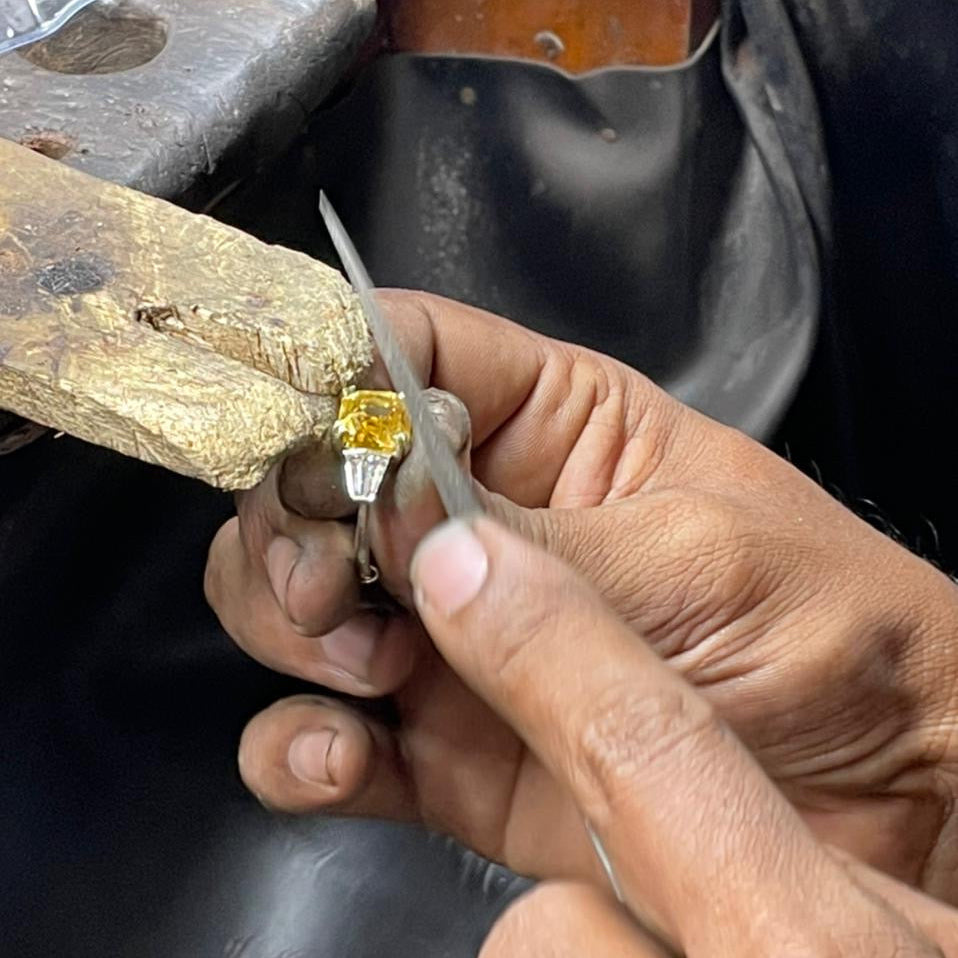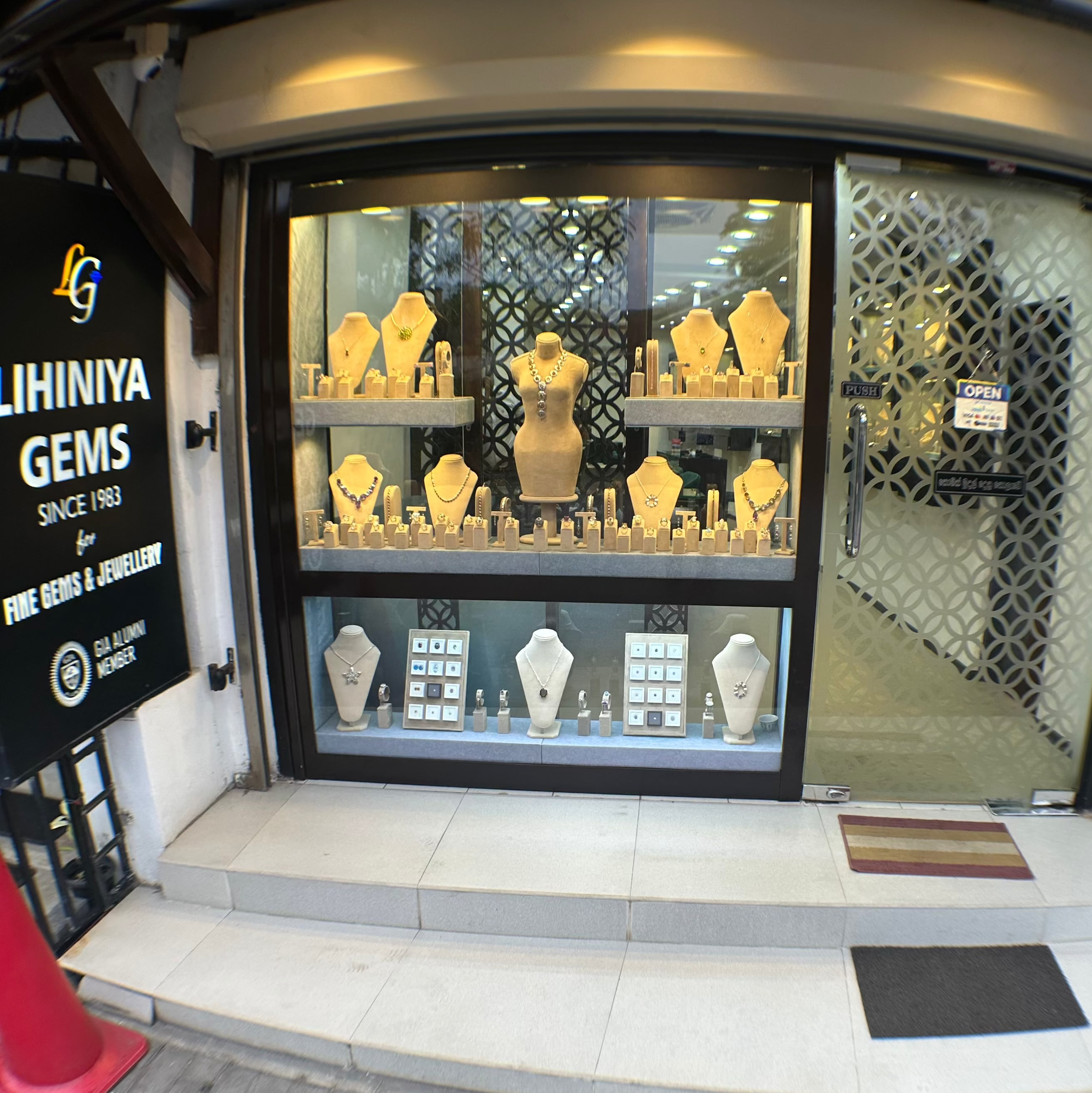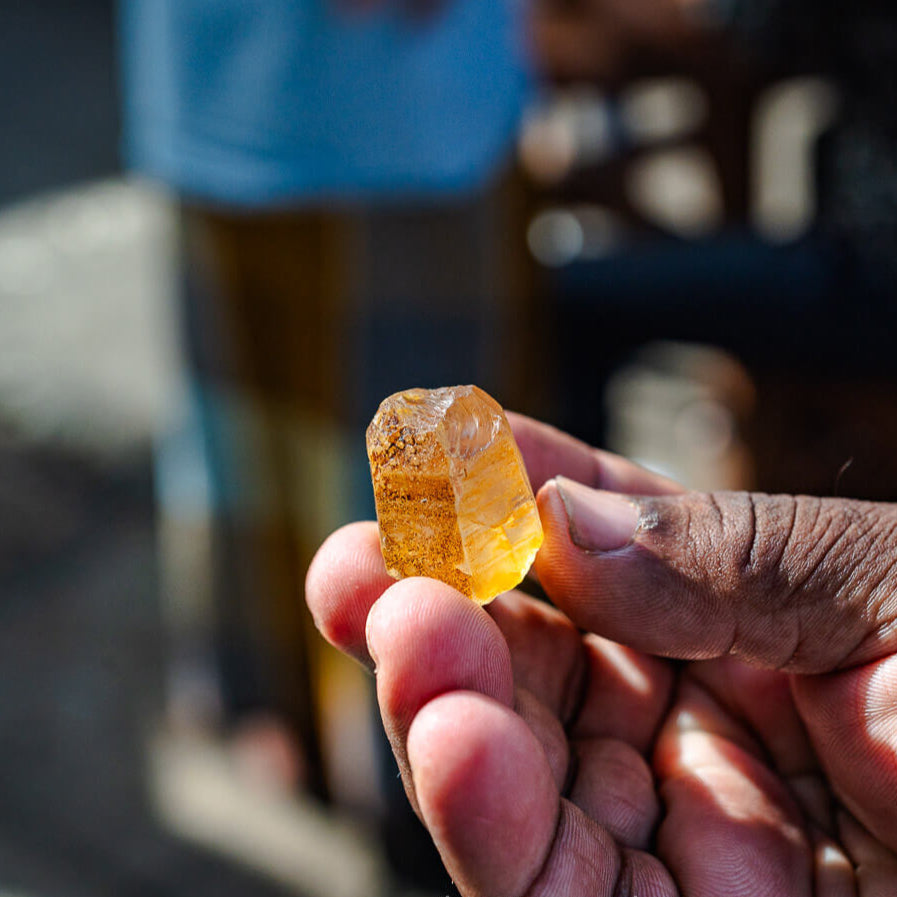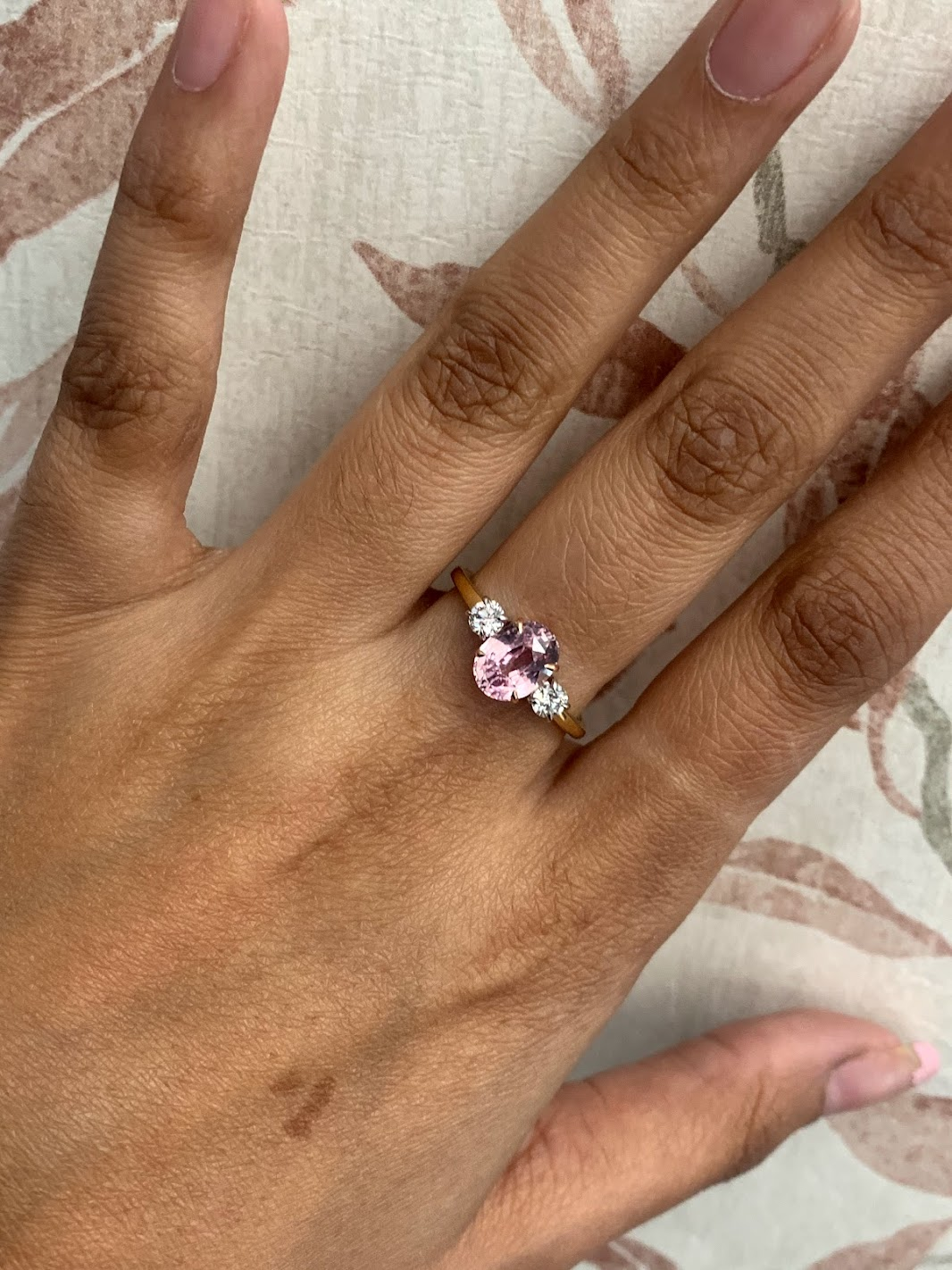Jewellery care
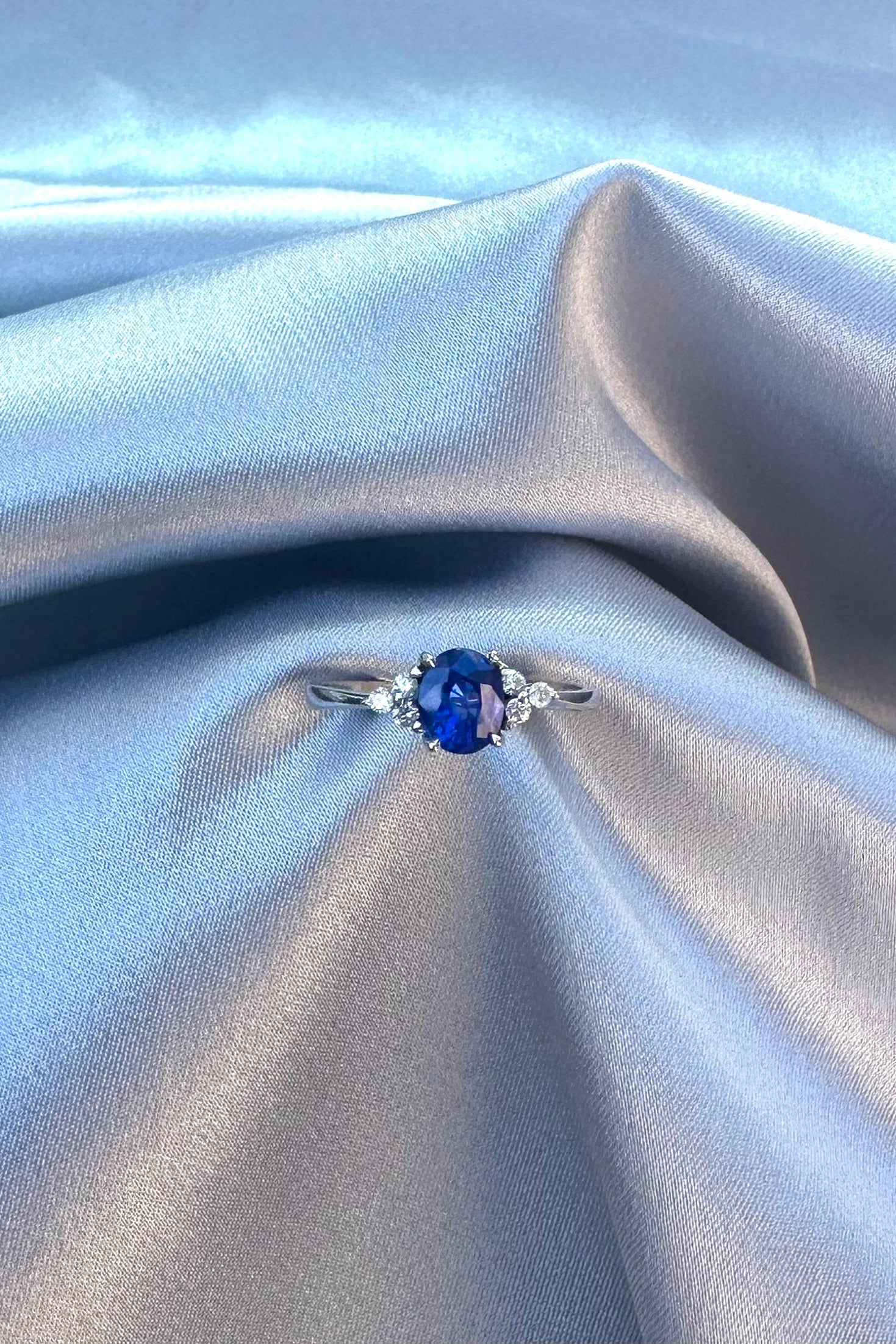
Preserving the Timeless Beauty of Your Jewellery
At-Home Cleaning:
Basic Jewellery Care
For sensitive gemstones, use a soft brush with mild dish soap and lukewarm water to gently clean. Rinse thoroughly and dry with a clean, soft cloth. If your jewellery is worn regularly, check it often to ensure settings are secure and clasps and joints are intact. Prong settings, in particular, are prone to loosening if they’re knocked against a hard surface or caught on clothing, which could cause the gemstone to fall out.
Professional Cleaning:
A professional clean is recommended at least once in couple of years, depending on how frequently you wear your jewellery. In between professional cleanings, most jewellery can be maintained with a non-abrasive jewellery cleaner. We suggest reaching out to us for this service, or visiting a professional jeweller.
Storage:
At the time of purchase, all of our jewellery comes packaged in a protective box, case, or tarnish-resistant pouch. When not in use, we advise keeping your jewellery in its original case or another lined box or pouch to protect it. Gemstones and diamonds can scratch other stones and cause wear to precious metals, so avoid stacking rings or bracelets that could be vulnerable to abrasion. Additionally, extreme temperatures, perfumes, cosmetics, and household chemicals can damage jewellery.
What to Avoid:
Steer clear of exposing gold jewellery to household bleach, as it can cause discoloration or even disintegration. Sterling silver tarnishes quickly when exposed to salty air, chlorine in swimming pools, or products containing sulphur, like rubber gloves and certain types of paper. To remove tarnish, use a non-abrasive silver polish.
Always be mindful of your jewellery’s exposure to hard surfaces, as impacts can cause damage. Even diamonds can chip if struck with enough force or at the right angle.
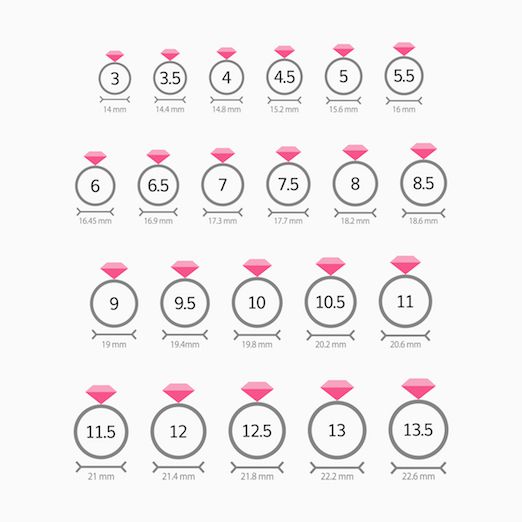
How to measure ring size
Ring Sizing
How to Measure Your Ring Size with a String
- Take a length of floss or string and wrap it around the base of your finger.
- Mark where the floss or string first overlaps with a pen.
- Stretch the length of string out along a ruler or measuring tape, and take down the length in millimeters.
- The length you measured is the circumference of your finger—to calculate the diameter, divide the circumference by pi (dividing by 3.14 will work).
- Use the ring size chart below to compare the diameter of your finger to the standard ring sizes.
String and floss can stretch, so don't pull them too taut. If you do, your measured ring finger size may be larger than your finger and any rings you purchase may be too big.
The image provided is a general guide for ring sizing. For a more accurate and precise measurement, please feel free to contact us.

